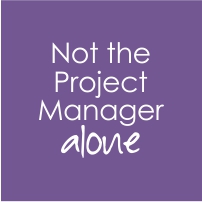 While there is a plethora of project management tools available that all offer a number of bells and whistles, the single greatest value of implementing this type of solution is – without a doubt – the successful completion of projects.
While there is a plethora of project management tools available that all offer a number of bells and whistles, the single greatest value of implementing this type of solution is – without a doubt – the successful completion of projects.
Unfortunately, the figures available out there paint a pretty bleak picture when it comes down to project success. We’re all aware of the Standish Group’s CHAOS report, which stated last year that more than half of the software projects undertaken between 2002 and 2010 where described as either challenged or complete failures. A paltry 37 percent were classified as successful.
Underlining this issue, research conducted by global management consulting firm, McKinsey & Company in conjunction with the University of Oxford in 2012, found that, of the 5,400 large scale IT projects (with initial budgets greater than $15M) surveyed:
- 17 percent of large IT projects go so badly that they can threaten the very existence of the company; and
- On average, large IT projects run 45 percent over budget and seven percent over time, while delivering 56 percent less value than predicted.
Worrying statistics indeed.
So, the focus on implementing a project management tool really should be on how to reach greater levels of successful completion. Simply defined, this would mean:
- Completing a greater number of projects completed within time;
- Concluding more projects with the necessary quality; and
- Completing a greater percentage of projects within the defined budget.
Once you get this equation right, you’ll be able to increase the number of projects successfully completed, without using more resources. While this really sounds great, how do you actually get there?
The most important thing to do is create visibility of the current status of the portfolio, be it good or bad.
Having a view of all projects will allow you to better understand each one’s status in terms of:
- whether they are on time;
- what risks and issues exist that may impact successful completion;
- what’s planned for this week; and
- what the status of the budget is, and so on.
This will put you in far better position to actually determine (before it happens) whether a project will be successfully completed.
This type of visibility, however, calls for quality, real time, accurate information relating to all the project elements (including time, progress, costs, risks and issues) and this is not the job of the project manager alone.
Not only would this mean that the project manager would spend all their time trying to find out the current status of all items and keeping the project management tool updated, but the quality of the information would not reach the standard it could if the actual team members where updating it themselves.
In addition, the information would never be as up-to-date or “real time” as if the project team members where updating it themselves, blow by blow, as it happens.
Are you looking for a project management tool that will give you maximum benefit that you and your entire project team can use? If so, try a free 30-day trial of Project Portfolio Office (PPO) today at www.go2ppo.com/try.php.
PPO is an award winning online project portfolio management and collaboration application. PPO is simple, immediate, secure and affordable. PPO is flexible and can be configured to support any methodology.


